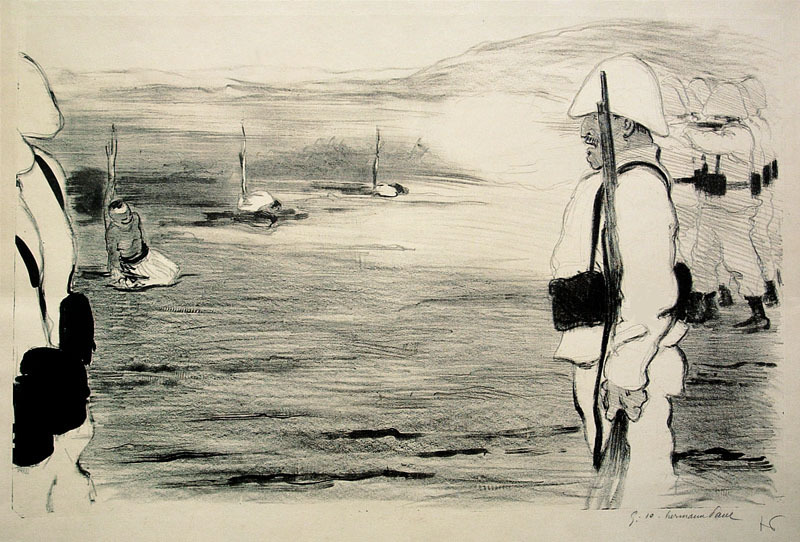
19th, 20th & 21st Century Fine Prints
707-546-7352 · fax 707-546-7924 · web: www.annexgalleries.com · email: artannex@aol.com
Expansion Coloniale by Rene Georges Hermann-Paul

Expansion Coloniale
Rene Georges Hermann-Paul
Expansion Coloniale
Rene Georges Hermann-Paul
1864 - 1940 (biography)This stark image of the firing squad execution of Boers (Dutch colonialists) by troops of the British Empire is in reference to the Second Boer War of 1899 to 1902, a conflict between Dutch and British armies for power over South Africa's land and resources. This was published in the French leftwing periodical, l'Assiette du Beurre, in May of 1901. Hermann-Paul was known for his biting, succinct political comics and illustrations.
It appears that Hermann-Paul is referring to an early 1901 campaign by the British against the Dutch, in which the more powerful and numerous British troops hunted down a small Dutch guerilla commando and publicly executed many of them. At this point in the Second Boer War the British military, under the direction of Lord Kitchener, had successfully destroyed the morale of the Boer people (men, women, and children included) as well as many Black African communities, after enacting his "scorched earth" tactics: detroying their homes and farms so as not to allow shelter for possible guerilla activity, and then forcing them into concentration camps and essentially leaving them to the elements. Many starved to death or contracted diseases that became fatal due to lack of medical supplies. Up to 26,000 Boers and 20,000 Black Africans - who were not a part of the conflict - died in the camps.
Public sentiment quickly turned from supportive of the British Empire to disgust at their tactics against the Dutch Boers. This outcry was met by offical government claims that the camps were voluntary and of provided comfortable living situtations for all families; this was quickly proved false. At this point, British statesman Sir Henry Campbell-Bannerman stated, "When is a war, not a war? When it is carried on by methods of barbarism in South Africa."


